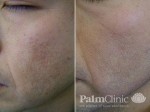Botox® is a prescription medicine for the treatment of frown lines, horizontal forehead lines and crow’s feet round the eyes. Botox® has risks and benefits. Ask your doctor if Botox® is right for you. If you have side effects, see your doctor. You will need to pay for Botox® and clinic fees will apply. For details on precautions & side effects consult your healthcare professional or the Consumer Medicine Information (CMI) at www.medsafe.govt.nz. Botox® treatment lasts about 4 months and further courses of treatment may be necessary. Should only be administered by trained medical professionals.(Contains botulinum toxin A 50,100 & 200 units). Allergan (NZ) Limited, Auckland.
Juvederm Ultra™ & Juvederm Ultra Plus™ are medical devices Class III for the filling of medium size and deep facial wrinkles by injection into the skin and for creating definition and volume in the lips. Contains 24mg/mL. cross-linked hyaluronic acid. Juvederm has risks and benefits. Cautions: Use in an area that has been treated with another dermal filler, people with autoimmune disease, or who are pregnant, breastfeeding, under 18 years of age or have an increased susceptibility to keloid formation and hypertrophic scarring. People on blood thinning medicines. Possible side effects: injection site inflammatory reactions (redness/swelling, itching/pain on pressure) induration or nodules; discolouration; weak filling effect. If you have side effects or concerns speak to your doctor. Product and treatment costs will apply. Note: Juvederm treatment lasts about 12-24 months. For product information check with your doctor or product information at Allergan (NZ) Limited, Auckland.




